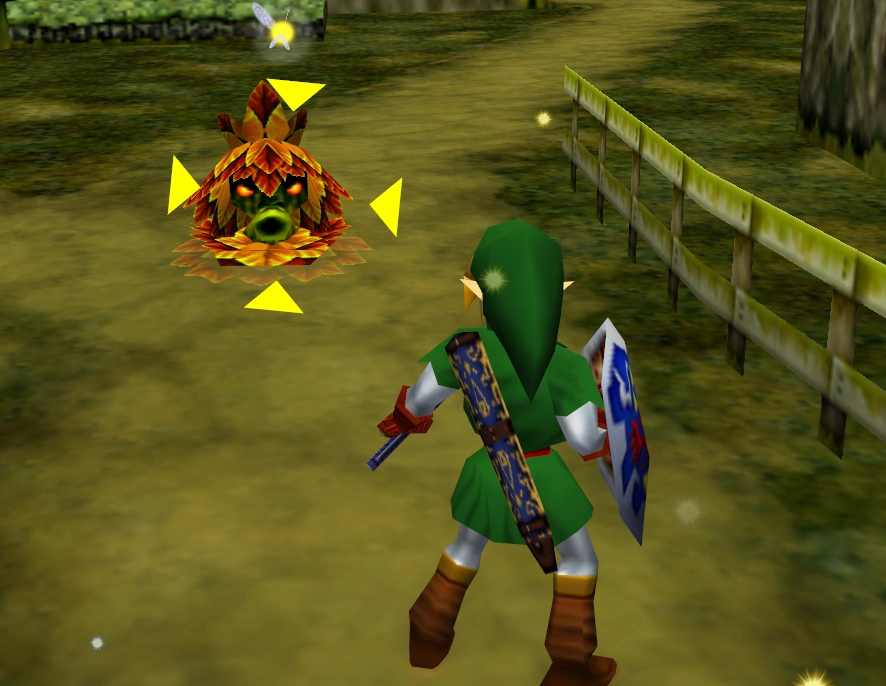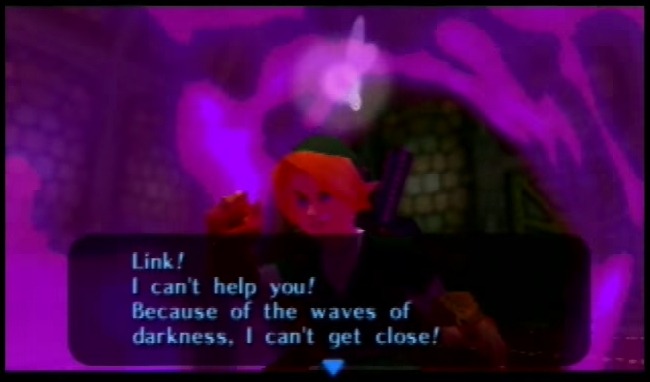The best example of this I can think of is Final Fantasy 14. In the game's lore the main character (you the player character) and a few other NPCs have an ability called the "Echo" that bestows a variety of effects to different characters. It gives you special powers and makes you immune to certain magical effects. It's a nice buff overall. What I'm talking about are specific game mechanics that we as people see in order to play the game.
Most special attacks from enemies and bosses display an AOE effect on the ground in order for players to dodge said attack. We see the glowing lines and area for practical gameplay reasons. The characters in the game see them as the flow of aether from enemies.
What about death and doing boss fights over and over again? That doesn't happen in real life until it's successful. Every unsuccessful attempt is just a vision of what may have been thanks to the power of the Echo (visions of the future, visions of the past, visions of memories that are not your own, etc). This power is even acknowledge in game by the player character during a specific cutscene involving Titan and landslides in the new expansion. There are other examples like harder boss fights with new mechanics simply being a story retold by a Bard to make it more exciting for his audience.
What other games are like this?

Most special attacks from enemies and bosses display an AOE effect on the ground in order for players to dodge said attack. We see the glowing lines and area for practical gameplay reasons. The characters in the game see them as the flow of aether from enemies.
What about death and doing boss fights over and over again? That doesn't happen in real life until it's successful. Every unsuccessful attempt is just a vision of what may have been thanks to the power of the Echo (visions of the future, visions of the past, visions of memories that are not your own, etc). This power is even acknowledge in game by the player character during a specific cutscene involving Titan and landslides in the new expansion. There are other examples like harder boss fights with new mechanics simply being a story retold by a Bard to make it more exciting for his audience.
What other games are like this?

Last edited:





